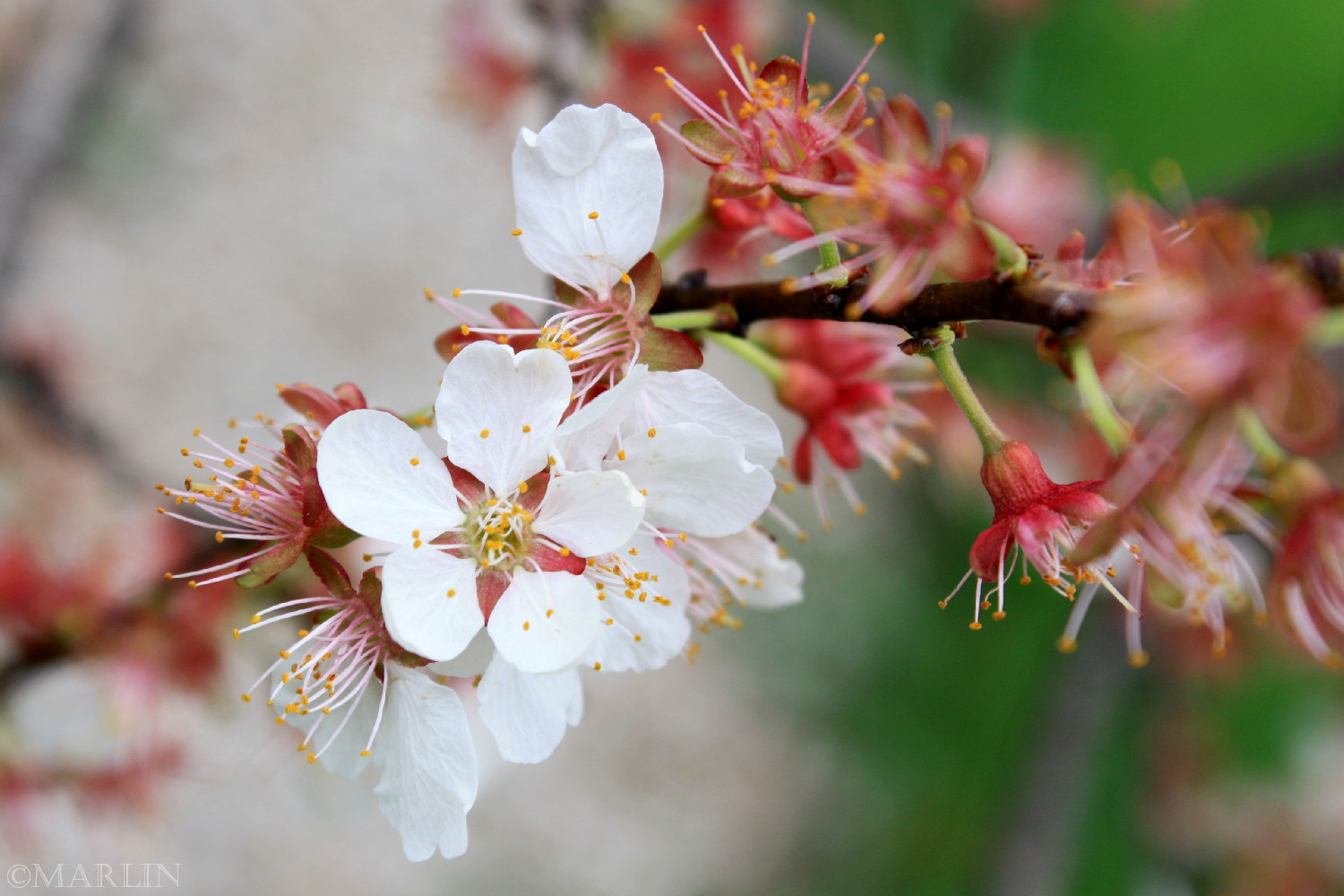Purple Apricot – Prunus dasycarpa
Purple apricot is a lovely, delicate tree with reddish-orange buds bursting into white blossoms. A delicate tracery of branch and twig is reminiscent of the best Japanese cherry blossom art. Truly a beautiful and unusual tree here in the American Midwest. I fear I missed the best of this tree’s flowering, but I will visit again in 2013 to see if I can catch them in all their glory. These pictures were taken on April 27th which tells me their peak is probably a week earlier; a very early bloom that makes apricot susceptible to spring frost.
This purple apricot is 16 years old [2]
This species is a native of Asia Minor and known in North America only in cultivation [1]. True apricots (Prunus armeniaca) are of high commercial value and modern American production of apricots comes from the seedlings carried to the west coast by Spanish missionaries [6]. Cultivated along the Pacific Coast and in Utah, the U.S. is small potatoes compared to Turkey, Iran, and Pakistan accounted for more than 1,700 tons in 2008 [5].
The Italian liqueur amaretto and amaretti biscotti are flavoured with extract of apricot kernels. Cooking oil pressed from the kernels is paradixically known as oil of almond [6]. Apricots have been cultivated in Persia since antiquity, and dried apricots were an important commodity on Persian trade routes. Apricots remain a commodity in Iran [6].
Another charming Morton triumvirate of fruit trees
Many plants in the family Rosaceae are of economic importance and contribute to people’s livelihoods. The Rosaceae contain a great number of fruit trees of temperate regions. The fruits contain vitamins, acids, and sugars and can be used both raw and for making preserves, jam, jelly, candy, various drinks, wine, vinegar, etc. The dried fruits of the genera Amygdalus and Armeniaca are of high commercial value. Some plants in the genus Rosa containing essential oils or with a high vitamin content are used in industry. Rosaceae wood is used for making various articles, stems and roots are used for making tannin extract, and young leaves are used as a substitute for tea. Numerous species are used for medical purposes or are cultivated as ornamentals [4].
References
- USDA, ARS, National Genetic Resources Program Prunus —dasycarpa Ehrh.
- Purple Apricot – Prunus dasycarpa, Morton Arboretum acc. 149-93-1,2 & 3, photos Bruce Marlin
- Morton Arboretum, Crabapples for the Home Landscape
- Flora of China, ‘Rosaceae A. L. Jussieu qiang wei ke‘
- Wikipedia, ‘Apricot Producers 2008‘
- Wikipedia, ‘Apricot‘
Family Rosaceae – Rose Family; Fruit Trees
Trees Index | Pine Family | Beech, Oak | Nut Trees | Birch Family | Magnolias
Tree Encyclopedia / North American Insects & Spiders is dedicated to providing family-friendly educational
resources for our friends around the world through large images and macro photographs of flora and fauna.


